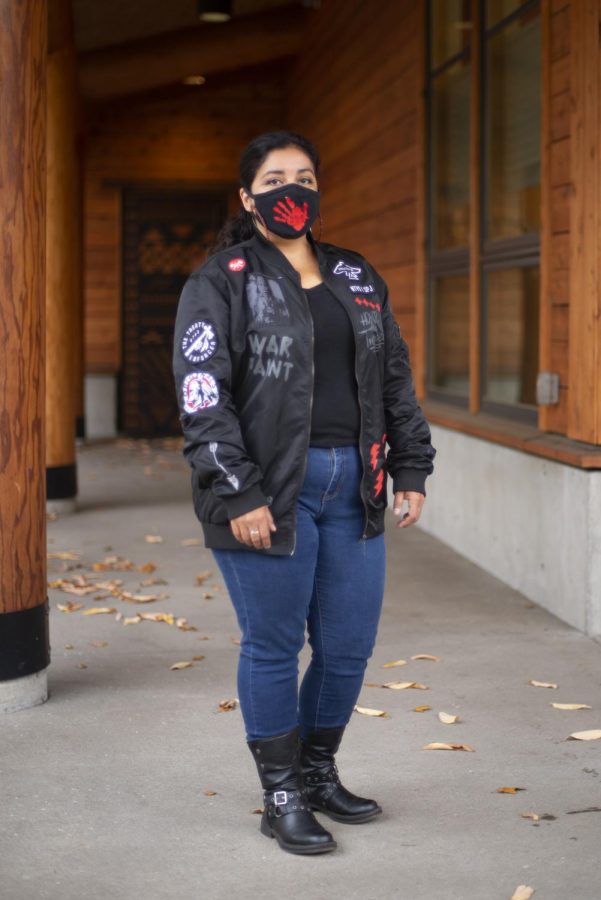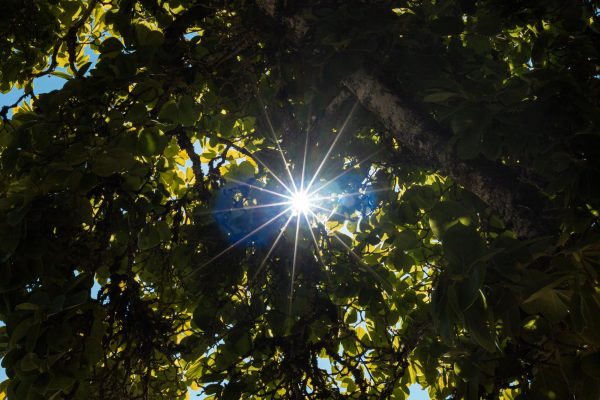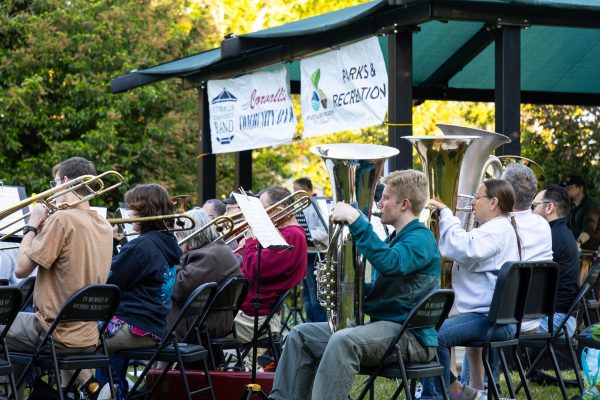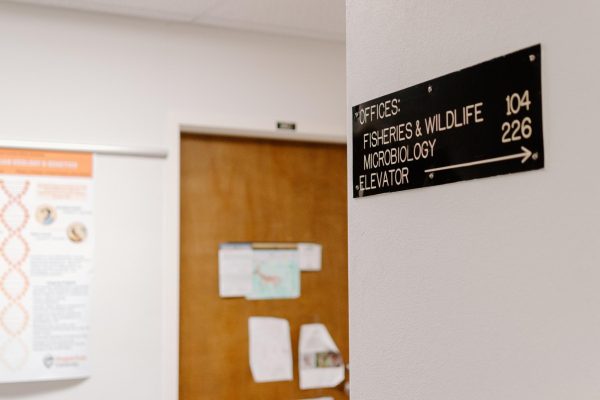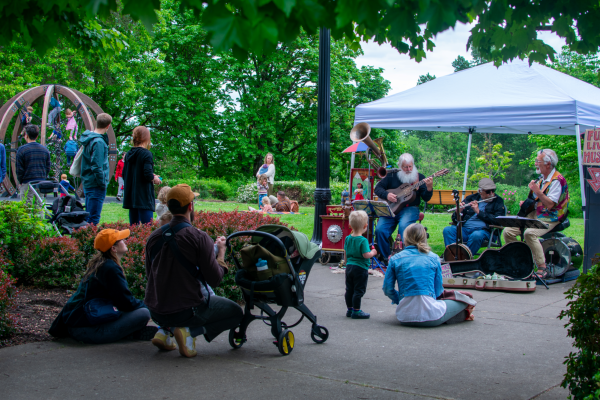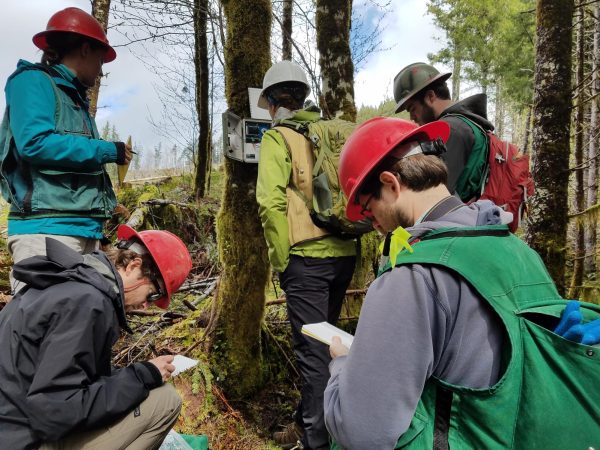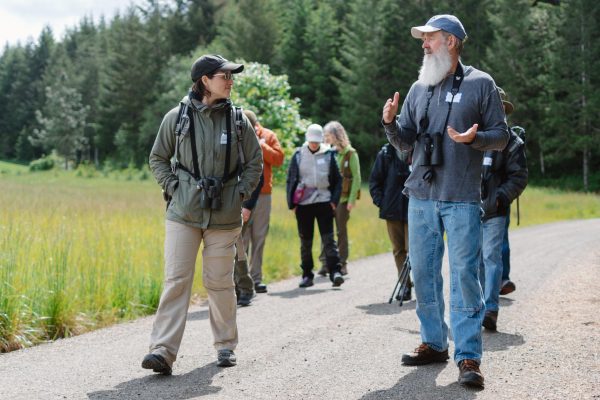‘We ought to be doing more’ for Native American Heritage Month
Jess Hume-Pantuso, Photo Editor
Center Director Kaku-Ixt Mana Ina Haws and Assistant Professor, School of Language, Culture, and Society Luhui Whitebear poses in a mask acknowledging Missing and Murdered Indigenous Women. The image of a red handprint has come to symbolize the MMIW movement as a way to represent the thousands of women who have been silenced.
November 1, 2021
Though there are more than 400 Native Americans living in Corvallis, Ore., which is located on Kalapuya land, Luhui Whitebear said “there isn’t much in town for Indigenous folk outside of Ina Haws.”
Whitebear is the center director for the Kaku-Ixt Mana Ina Haws, a cultural center at Oregon State University that focuses on providing a space for Native American students to express their culture. Part of representing this population includes the celebration of Native American Heritage Month, which takes place in November.
“The month is a time to celebrate rich and diverse cultures, traditions and histories and, to acknowledge the important contributions of Native people,” according to the National Congress of American Indians. “Heritage Month is also an opportune time to educate the general public about tribes, to raise a general awareness about the unique challenges Native people have faced both historically and in the present and the ways in which tribal citizens have worked to conquer these challenges.”
The Ina Haws has been organizing events for Native American OSU students since 1973. Back then, community members worked out of a repurposed semicircular metal building known as a Quonset hut. They have been using the new Ina Haws center—initially called the Eena Haws center—since 2013.
Currently, the Ina Haws represents the Indigenous peoples of the Americas and Pacific Islands. The name “Kaku-Ixt Mana Ina Haws” is a combination of Chinuk Wawa, also called Chinook Jargon, and Polynesian languages. It translates to the “unified strength of the Beaver House.” The Ina Haws website clarifies that Kaku-lxt is pronounced Kah-goo EE-hxt—the x makes more of an h sound—Mana is pronounced Mah-nuh and Haws is pronounced house.
Whitebear said programming in the area to celebrate Native American Heritage Month has generally been “grassroots and sporadic.” Ina Haws, however, is planning events for the month.
“The details of such events are tentative right now but we will be having an Indigneous Identity panel in early November,” said Fawn Harris, one of the student leadership liasons of the Ina Haws. “Other Indigenous events will soon follow such as Two Spirit Stories of Resilience and a film screening.”
For the City of Corvallis itself, there are no “plans this year for specific activities for Native American Heritage month,” according to Biff Traber, mayor of Corvallis.
“We have participated in the Indigenous People’s Day celebrations and are sponsors [through Corvallis-Benton County Library] of the Champinefu Lecture Series,” Traber said.
The Champinefu Lecture Series is an annual event co-sponsored by the Marys Peak Group and the Confederated Tribes of the Grand Ronde. 2021 marks the fifth year of the series and the second year of it being hosted virtually via webinar programs.
A lecture called “Fire Since Time Immemorial: An Indigenous Fire Chronology for Western Oregon” took place on Oct. 13 as part of the series, and two more, “Trees & Forests of Marys Peak: The Stories They Tell” and “Oregon’s 100-Year Water Plan: What Coyote Can Teach Us,” will take place on Nov. 10 and Dec. 8, respectively.
This past Oct. 11 marked Oregon’s first state-recognized Indigenous People’s Day, which replaced the former Columbus Day. Oregon is currently one of only 13 states at this point to have made this change, and it took multiple years for it to pass through the state legislature.
As of 2021, President Joe Biden proclaimed Oct. 11 as Indigenous People’s Day, but also observed Columbus Day, stating that the day should be one of “reflection” on American exploration and the perseverance of Native Americans.
“The Federal Government has a solemn obligation to lift up and invest in the future of Indigenous people and empower Tribal Nations to govern their own communities and make their own decisions,” the Indigenous People’s Day official proclamation stated. “We must never forget the centuries-long campaign of violence, displacement, assimilation and terror wrought upon Native communities and Tribal Nations throughout our country.”
Traber said that for Corvallis, he would like to see more events celebrating Native American Heritage Month, but said COVID-19 has created obstacles.
“We ought to be doing more and would be working with our advisory boards and community groups to do so,” Traber said. “However, one impact of COVID-19 has been a suspension of most advisory boards. We are in the process of restarting those, but plans for future events and activities will be months away.”












































































































